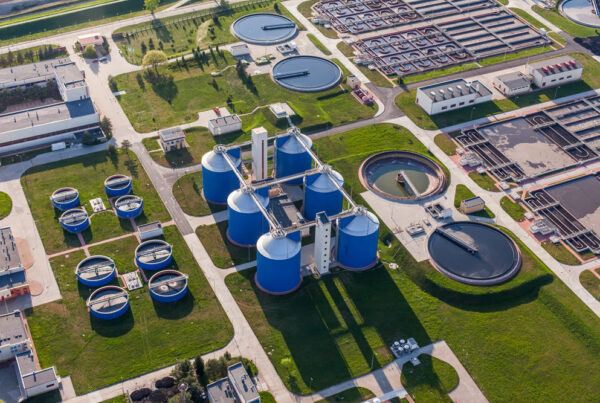After the implementation period, the Law on Environmental Protection 2014 has contributed to creating positive changes in environmental protection, but revealed problems, inadequacies, and overlaps with other legal provisions such as the Law on Investment, the Law on Public Investment… In order to overcome the limitations of the Law on Environmental Protection 2014 and create new mechanisms in environmental protection, the Law on Environmental Protection 2020 was approved by the National Assembly on November 17, 2020. ARES Environment will analyze some new points of the Law on Environmental Protection 2020 that can directly affect businesses:
First, amending, adding regulations on Environmental Impact Assessment (“EIA”)
The Law on Environmental Protection 2014 stipulates EIA as a tool to analyze and forecast the impacts on the environment when implementing a project. Therefore, many inadequacies have been revealed in the implementation process because when the project is implemented in reality, there will be many changes that the EIA cannot foresee and cannot predict in time. In addition, during the project preparation stage, the Investment Law 2020 only requires investors to carry out a preliminary environmental impact assessment, while the Law on Environmental Protection 2014 requires the preparation of an EIA during this period. The inconsistent regulations can cause difficulties for investors in the process of implementing investment procedures. From these issues, the EIA regulations of the Law on Environmental Protection 2020 have changed as follows:
- Additional procedures for preliminary environmental impact assessment: For investment projects in Group I in the pre-feasibility study stage of construction investment, proposal for investment policy, request for approval of investment policy in accordance with the provisions of the Law on Investment 2020, the investor have to carry out their own preliminary environmental impact assessment. Performing a preliminary assessment to identify and forecast the main impacts of the project on the environment based on the scale, production technology and location of the project; from there, analyze, evaluate, and choose methods to minimize the environmental impact of the project. At the same time, the preliminary assessment also aims to identify the main environmental issues and scope of environmental impacts that need to be kept in mind during the implementation of the environmental impact assessment.
- Amendment of regulations on subjects performing EIA: Instead of identifying subjects according to the project approval authority like the Law on Environmental Protection 2014, Article 30 of the Law on Environmental Protection 2020 has narrowed the scope of subjects and determined according to the level of impact on the environment,
- Amendment of regulations on subjects performing EIA: Instead of identifying subjects according to the project approval authority like the Law on Environmental Protection 2014, Article 30 of the Law on Environmental Protection 2020 has narrowed the scope of subjects and determined according to the level of impact on the environment, including: (i) investment projects in group I are projects with high risk of adverse impacts on the environment and (ii) some investment projects in group II are projects with risks of adverse impacts on the environment according to points c, d, đ, e, Clause 4, Article 28, Law on Environmental Protection 2020.
- Clearer regulations on content of EIA reports: The main contents of EIA reports under the Law on Environmental Protection 2020 add more requirements than those in the Law on Environmental Protection 2014, especially the report requires assessment and identification of possible environmental incidents; assess the conformity of investment projects with the national environmental protection planning, regional planning, provincial planning, regulations of the law on environmental protection and other relevant laws…
- Changes in EIA approval procedures: Instead of approving EIA reports like the Law on Environmental Protection 2014, the Law on Environmental Protection 2020 stipulates on approving results of appraisal of EIA reports as a basis for competent state agencies to implement the appraisal of the feasibility study report, the basic design of the project.
Second, adding regulations on Environmental Permit
The permits related to the environment are not specified in the Law on Environmental Protection 2014 but scattered in the laws on irrigation, water resources… investors have to carry out many administrative procedures on environment and related fields after approval and before the official operation of the project. This also causes many difficulties for state management. Therefore, the Law on Environmental Protection 2020 has integrated all types of environmental permits such as wastewater discharge, exhaust gas discharge, hazardous waste treatment, etc. into one type of permit called Environmental Permit.
Subjects that must have an Environmental Permit include (i) Group I, Group II and Group III investment projects that generate wastewater, dust, and exhaust gases that are discharged into the environment must be treated or generate hazardous wastes must be managed according to regulations on management waste when put into official operation; (ii) Investment projects, concentrated production, business and service zones, and industrial clusters operating before the effective date of this Law have the same environmental criteria as those mentioned above; projects in case (i) at this stage which are urgent public investment projects according to the law on public investment will be exempt from Environmental Permit. Depending on the specific type of project, the licensing authority and the content of the Environmental Permit will clearly define the specific requirements for environmental protection.
One of the bases for considering the granting of Environmental Permits for the project is the assessment of the load capacity of the environment in the project implementation area. The Law on Environmental Protection 2020 is supplemented with this regulation to limit the tolerance of the environment to pollution sources in the area. Competent state agencies will not approve results of appraisal of EIA reports or issue Environmental Permits for new investment projects that discharge wastewater into surface water sources that are no longer capable of carrying loads as announced by state agencies, unless the investor has a pollution treatment plan, or a wastewater treatment plan that meets environmental technical regulations on surface water quality so as not to generate more pollution in this area. This regulation can directly affect investors when preparing to deploy investment projects in areas with signs of environmental pollution.
Third, amending regulations related to compensation for damages
One of the most difficult problems in environmental disputes is that the aggrieved party cannot prove a cause-and-effect relationship between the environmental violation and the damage caused by it. To overcome this problem, the Law on Environmental Protection 2020 stipulates that the responsibility to prove this causal relationship belongs to the defendant, that is, the organization or individual that commits violations causing environmental pollution when the case is investigated and resolved in Court. This regulation is intended to protect the legitimate rights and interests of the party suffering damage caused by violations of the law on environment.
At the same time, the Law on Environmental Protection 2020 also mentions for the first time the principle of determining compensation liability when there are 02 or more organizations, individuals causing environmental damage. The principle of compensation is determined according to the ratio of damage caused to the total environmental damage between the parties.

Analysis and recommendations
The regulations on EIA in the Law on Environmental Protection 2020 have been unified and synchronized with the Law on Investment 2020 and the Law on Public Investment 2019. At the same time, the Law on Environmental Protection 2020 has clearer provisions than the Law on Environmental Protection 2014 on requirements for EIA during the preparation and implementation of investment projects. EIA not only provides analysis and forecast of the environmental impact of the project, but also has the role of identifying environmental incidents to offer measures to minimize adverse impacts on the environment. This helps investors to prevent and minimize environmental problems that may occur during project implementation.
The uniform use of an environmental permit is assessed to facilitate investors when implementing projects and reduce costs in investment, production and business activities. This also helps the process of state management of the environment to be unified and tight.
However, it can also be a challenge for the authorities in the licensing, management and inspection of projects. The competent authorities will have to improve the professional quality of the staff handling and receiving dossiers.
In addition to complying with the new environmental regulations, investors should also note that the responsibility of proving a cause-and-effect relationship between an environmental violation and its damage will be on sued individuals and organizations. This regulation will also bind and strengthen the responsibility for investors in implementing and complying with environmental regulations.
Guidelines for the implementation of the Law on Environmental Protection 2020 will be drafted and promulgated in the near future. Enterprises need to update these guidelines to be able to strictly comply with the provisions of the Law on Environmental Protection, to avoid risks in business investment activities.
Download the Law on Environmental Protection 2020: Here (Vietnamese version)








